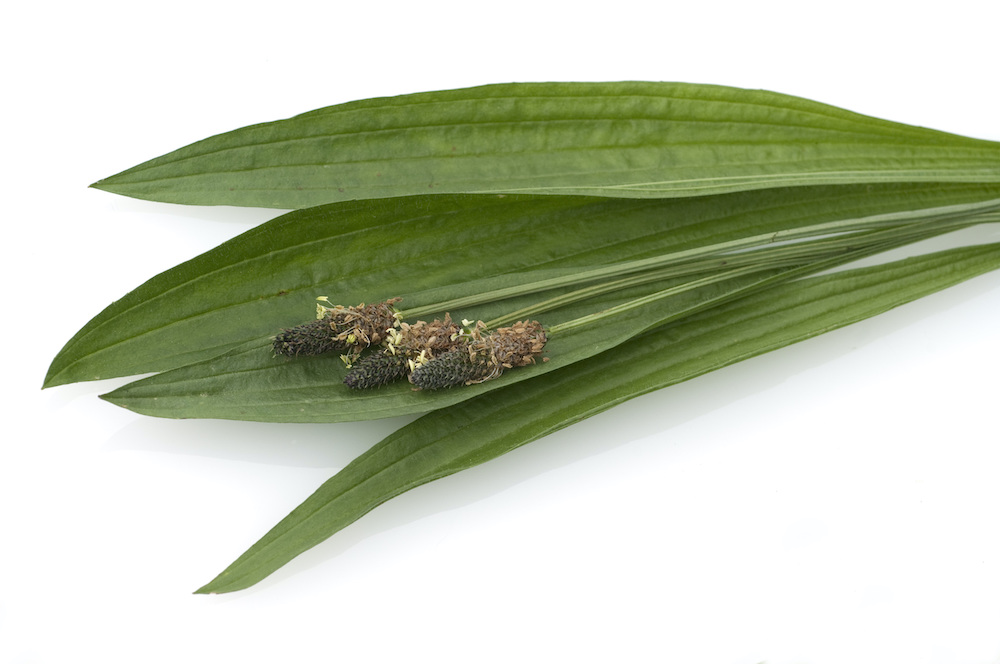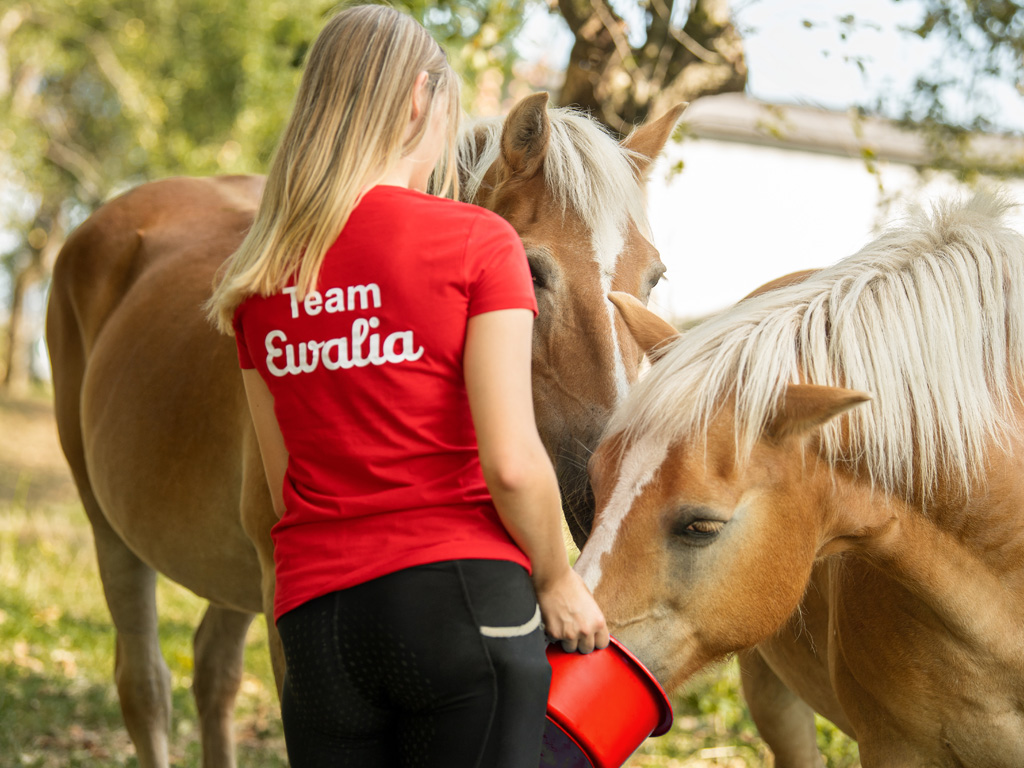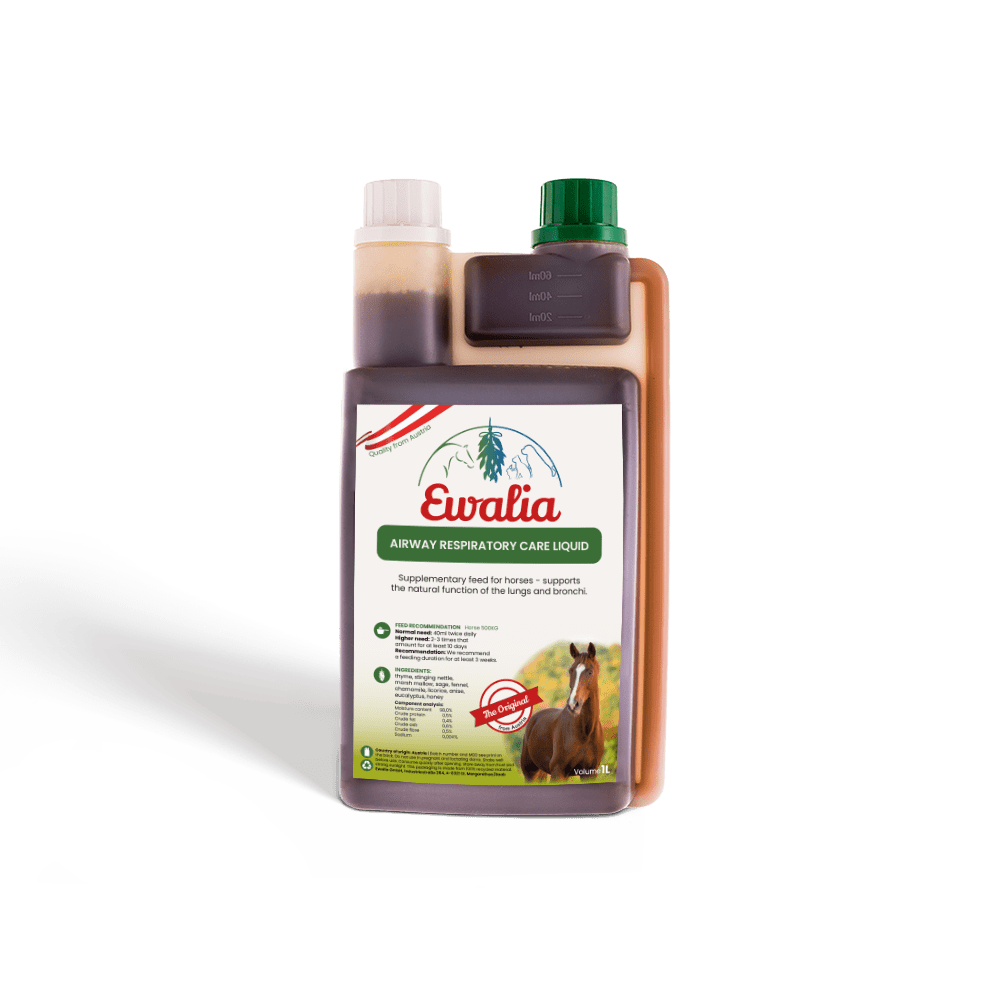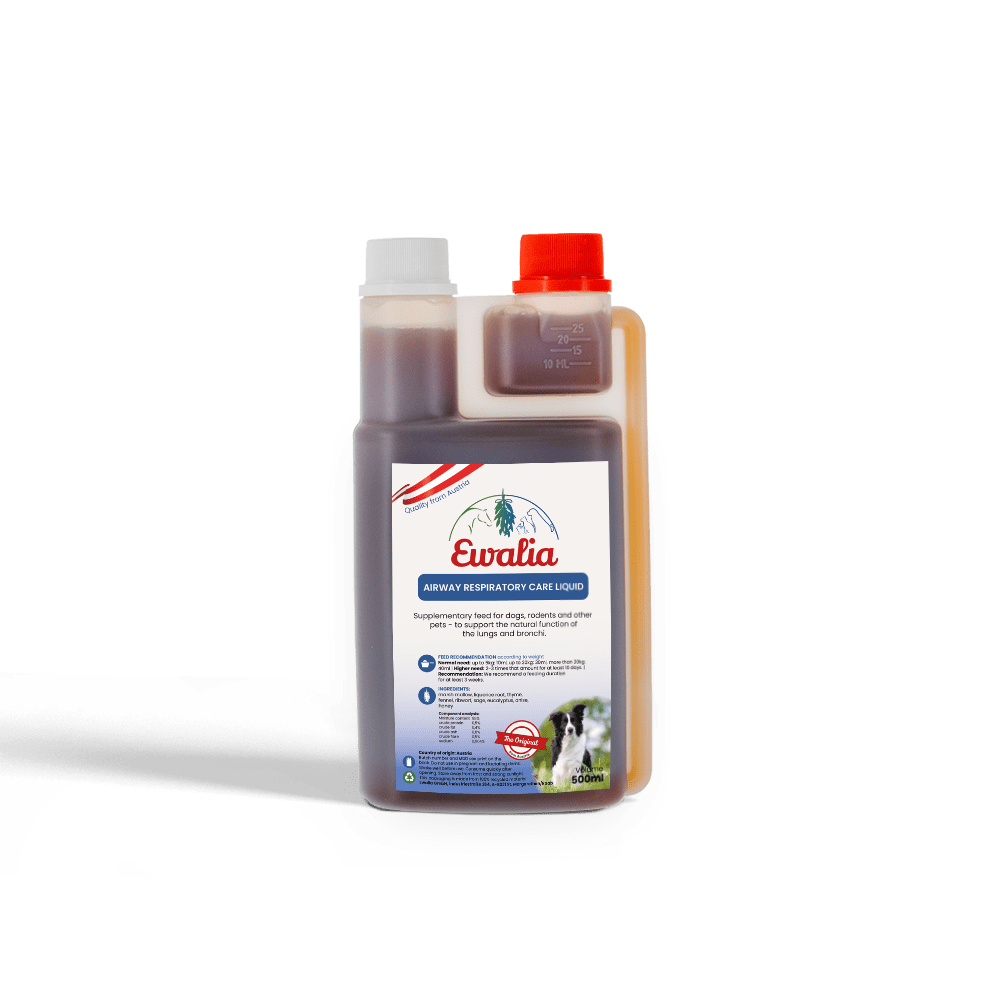Ribwort Plantain

Plantago lanceolata, aka lamb's tongue or ribwort plantain, is found almost everywhere: along paths, in meadows, and on lawns as "weeds". This modest plant deserves more attention, because it is one of the best remedies for respiratory diseases in horses and dogs.
Where does ribwort plantain come from, and what does it look like?
Ribwort plantain is found all over Europe as well as in North and Central Asia. It is hardy, makes few demands on its environment, and grows in fallow land, fields, waysides, and meadows. Its also grows at high elevations of up to about 2,000 metres. It can send roots down to 60 cm deep with its strong rootstock, propagates easily and spreads quickly, making it less welcome in gardens and lawns.
The plant belongs to the family Plantaginaceae and is a close relative of the broadleaf plantain, which contains similar substances. This family also includes speedwell and common toadflax.
Ribwort plants can grow to 40 cm in height. The plant's narrow, spear-shaped leaves display strong longitudinal veins and grow in rosettes close to the ground. Bald stems form from the centre of these, which initially bear small spherical flowers. The yellow-white stamens stand out markedly from the unassuming receptacle. This both facilitates pollination through the wind and attracts insects. The flowering period lasts from May until September, and as the seeds mature the spikes become increasingly cylindrical. The seeds have a slightly sticky nature, allowing them to stick to (and be carried over large areas on) animal paws or shoes, however local propagation takes place via the roots.
Which parts of ribwort plantain are used in phytotherapy?
Herbal remedies are made from both the leaves (Folium plantaginis) as well as the whole herb – leaves, stems, and flowers. The herb is harvest during the flowering period and either processed into extract or syrup or dried and prepared as tea. The tea must steep for at least 10 minutes for the active substances to be released. However, some of these substances are sensitive to heat, which is why cold extracts are often prepared.
For external use, ribwort plantain extracts have proven effective as a "green poultice" for superficial wounds.
What is ribwort plantain used for?
The young leaves are edible and taste a bit like mushrooms. Although they could be used in many different ways, they are rarely encountered in cookery.
Ribwort plantain has long been used as a healing herb. It was held in high esteem by doctors in ancient times, whether as a poultice against ulcers, for wounds and dog bites, or as a remedy for gastrointestinal complaints, earaches, malaria, goitre, and scorpion stings. The plant was probably also used much throughout Europe; old names that translate as "wound herb" or "healing plantain" indicate long experience with its wound-healing effects.
Ribwort plantain has been used for coughs and fevers as far back as the 11th century, and later was said to have lasting effects on the lungs, urinary tract, stomach, and intestines.
Plantago lanceolata was also highly esteemed in other parts of the world. Russian and Chinese-Mongolian medicine made versatile use of its healing properties. In traditional Chinese medicine it is described as a "cool energy" remedy and used to treat ailments of the lungs, large intestine, kidney, bladder, and liver.
Today, ribwort plantain is recommended to be taken internally for respiratory diseases, sore throats, and coughs. Externally, ribwort extracts are used in topical salves for their wound-healing and antibacterial effects.
What makes ribwort plantain so effective?
Ribwort plantain contains 2–3% iridoids (bitter-tasting secondary plant substances), including aucubin, which has antibiotic properties: ribwort juice will not form mould. This substance has antibacterial and anti-inflammatory properties, and has also been proven to protect the liver. Aucubin is sensitive to heat and is retained only through careful extraction; it loses its effect in teas.
The plants also contain about 2% mucilaginous substances; these have soothing effects on irritated mucous membranes. In inflammations of the upper respiratory tract, the mucilaginous substances in ribwort coat and protect the mucous membranes and relieve coughing irritation.
The tannins in ribwort plantain, which at 6.5% make up the largest group of substances, have astringent and haemostatic effects. They promote the healing of wounds and stabilise and strengthen affected mucous membranes.
The flavonoids in ribwort plantain have antioxidant properties and stimulate the immune system. The young leaves are rich in vitamin C.
Moreover, ribwort plantain is high in silicic acid and zinc, which can strengthen skin tissue and positively affect the tissue structure of the lungs.
What can ribwort plantain be used to treat in horses and dogs?
The plant's soothing, anti-inflammatory and antibacterial substances are ideal in preparations for quick relief from dry coughs and inflammations of the mouth and throat.
Applied externally, it relieves itching from insect bites and prevents inflammations from occurring.
Tip: Squeeze a fresh ribwort leaf between the fingers until it releases its juice, then place the leaf on the insect bite and secure there briefly.
Adverse effects:
Due to its bitter substances and tannins, consumption of large quantities of ribwort plantain can lead to gastrointestinal ailments and watery stool.
Sources
- Brendieck-Worm, C., & Melzig, M. F. (2018). Phytotherapie in der Tiermedizin. Stuttgart: Georg Thieme Verlag KG.
- Brendler, Grünewald, & Jaenicke. (08. 11 2018). Apotheken.de. Von Spitzwegerich: https://www.apotheken.de/alternativmedizin/heilpflanzen/8458-spitzwegerich abgerufen
- Forschergruppe Klostermedizin. (2014). Von Spitzwegerich: http://www.klostermedizin.de/index.php/heilpflanzen/arzneipflanze-des-jahres/55-arzneipflanze-des-jahres-2014-spitzwegerich-plantago-lanceolata abgerufen
- Länger, R., & Kubelka, W. (2021). Krause & Pachernegg. Von Phytokodex Spitzwegerichblatt: https://www.kup.at/db/phytokodex/datenblatt/Spitzwegerichblatt.html abgerufen















